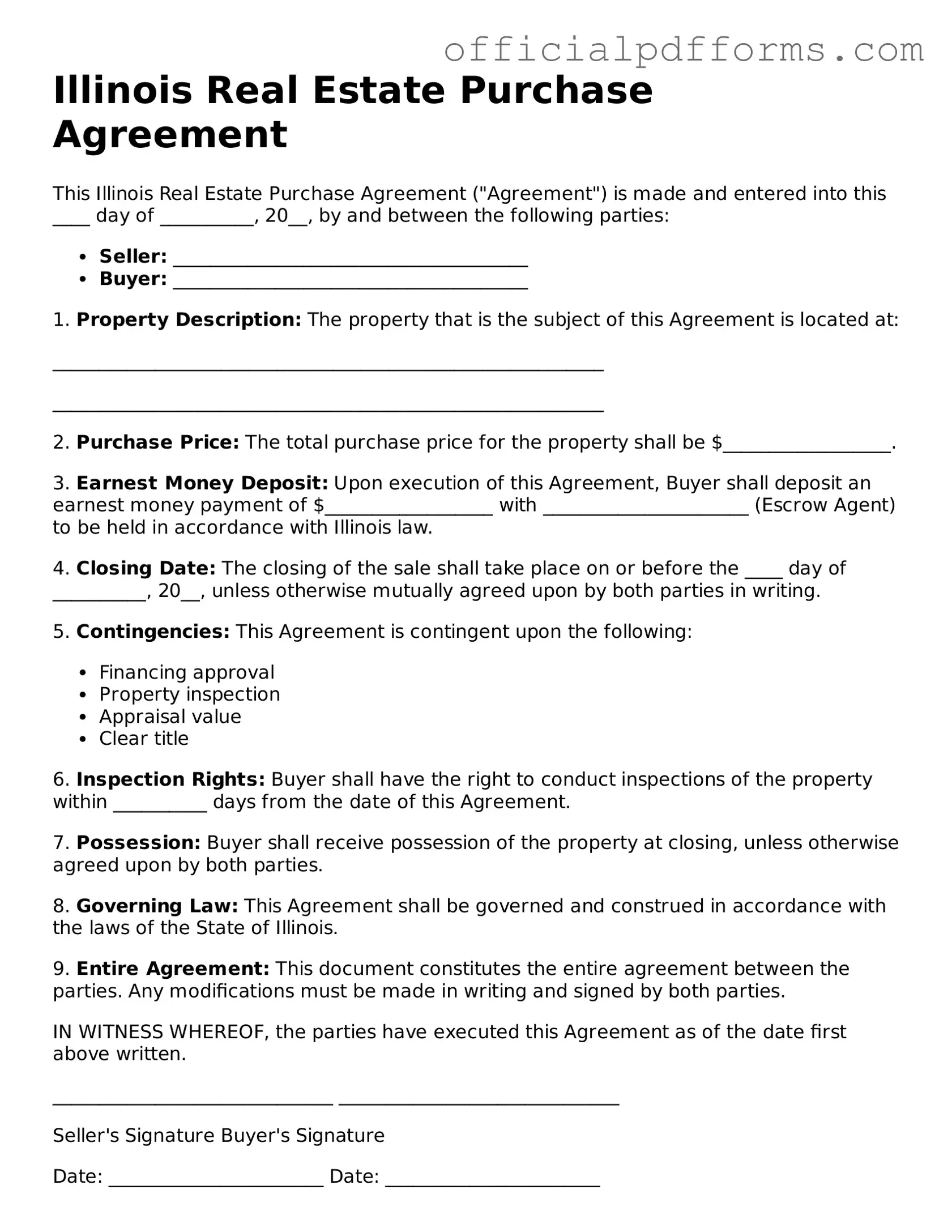Printable Illinois Real Estate Purchase Agreement Template
The Illinois Real Estate Purchase Agreement is a legal document that outlines the terms and conditions for the sale of real estate in Illinois. This form serves as a binding contract between the buyer and seller, ensuring both parties understand their rights and responsibilities. To get started on your real estate transaction, fill out the form by clicking the button below.
Access Form Online
